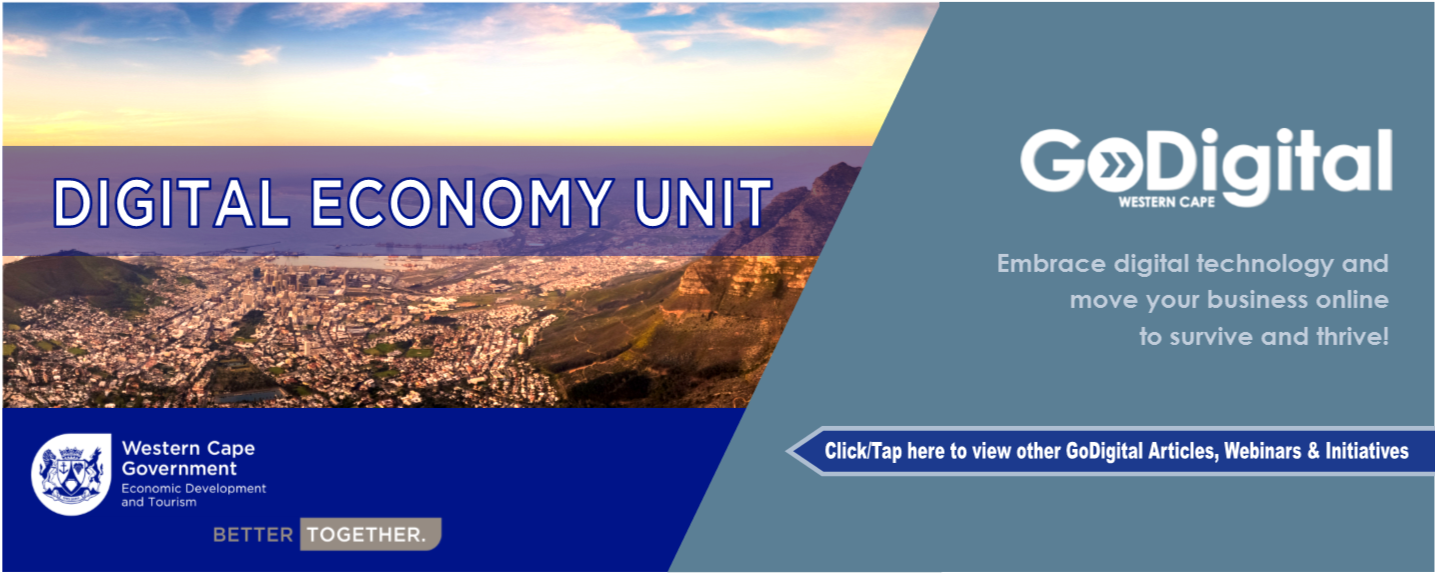Understanding digital marketing
Understanding digital marketing
The relationship between marketing and advertising
Marketing and advertising are essential pillars for any business to generate new leads, sign up new customers and drive sales. Although these terms seem to be used interchangeably, there are some key differences between them.
Simply put, advertising is a sub-component of marketing. Think of marketing as the overarching umbrella that includes research on products and customers, public relations, events, social media, brand awareness campaigns and advertising. Marketing includes the planning, implementation and control of all the activities performed to bring buyers and sellers together. Digital marketing is simply marketing using electronic devices. Advertising on the other hand is more geared towards getting the word out on specific products or services and with the intention of getting customers to purchase products or services. Digital advertising can be performed through the various online platforms available.
Types of digital marketing
There are many digital marketing channels available and one should think carefully about which approach, or combination (omnichannel) of approaches is best for your business and reaching your target market.
Here are examples of digital marketing types to consider:

- Search Engine Optimization (SEO) – this is a case of optimizing your webpage to ensure you feature as high as possible on related searches by including as many key words as possible i.e. if you sell toner cartridges include ‘toner sales’, ‘buy toner’, ‘printing supplies’ etc. on your webpage.
- Pay-Per-Click Advertising (PPC) - here one bids for advertising space for certain keywords on search engines, it’s a paid version of SEO.
- Social Media Marketing – various social media platforms such as Facebook, Twitter, Instagram, Snapchat and YouTube can be used to market your brand and perform direct advertising.
- Content Marketing – this involves sharing good quality content with customers. It is important to understand who they are and make sure the content appeals to them. It’s not always about sales but more about engaging and educating customers to build your brand and their trust. You can also include interactive content such as a quiz or poll.
- Affiliate Marketing – an affiliate can be an individual or company that promotes your product to persuade customers to buy, and gets paid a commission for each sale.
- Influencer Marketing – another option to reach a wider audience is to use an influencer, who already has a large number of followers, to endorse your brand. They range between mega-influencers (millions of followers), to micro/nano-influencers (thousands or hundreds of followers) and they charge for this accordingly.
- Email Marketing – this is still very much alive and getting customers to sign-up to your newsletter is a good way to keep customers informed and widen your reach. It is recommended to personalize emails and ensure there is value in the content.
- Viral Marketing – this is where a post is trendy, funny or strange enough to gain massive attention and drive a large spike in website traffic over a short period.
- Mobile Phone Advertising – this entails creating SMSs with the option for consumers to ‘opt in’ and receive information about your products, special offers etc. You can also create mobile specific marketing campaigns through an app interface.
Making use of digital marketing will increase your visibility online and entice customers to engage with your business. Create an experience to boost your brand with quality messaging and content that appeals to your target audience.
Types of digital advertising
It can be quite overwhelming to keep up with all the trends in the evolving space of digital advertising. Some digital advertising types can overlap and complement each other on the platforms where they are seen by customers, requiring you to carefully consider which types to use.

The key is to constantly research what types are available and which is best to promote your product or service. It is not necessary to use all options all the time and remember to take your budget into consideration when making these decisions.
Knowing your target market, how to reach them and catch their attention, will go a long way. Plan your advertising messages, what to include, when you would like to activate them, how frequently and be sure to include a call to action i.e. ‘Sign Up’, ‘Learn More’, ’Shop Now’, ‘Talk to Us’ etc.
Here are examples of the main types of digital advertising:
- Display Ads – the most simple and affordable form of digital advertising, comprising mostly of images and text. They appear as banners, pop-ups and flash ads on websites and do not target a specific audience.
- Social Media Ads – there are two options namely paid or organic social media ads. The paid ads will reflect as ‘Sponsored’ or ‘Advertisement’ whereas the organic is word of mouth where followers or viewers like and share your posts.
- Native Ads – these are similar to display ads but more strategic and intentional on where they are seen and the audience they target. It is largely based on audience online habits and the history of what they browse, so the ads seen will be relevant to them.
- Search Ads – users type key words into search engines to find products or services and they usually only look at the first page of results. Using the SEO and PPC mentioned under digital marketing will assist in featuring your business high up in the search.
- Video – video is powerful in that the viewer can absorb the content with minimal effort. Creating the video requires effort with appealing audio, visuals and the inclusion of music to the emotional dimension. It can be time consuming to produce but is often highly effective.
- Email – it is relatively easy to create an email list of existing and new customers who have selected to ‘opt-in’ to receiving emails when they engaged with your website. You can design email campaigns about your products, services and promotions or special offers. Keep the messaging clear and concise for best results.
Where to from here?
It is worth noting that digital marketing alone is an extensive and highly specialized field. Ideally a business should contract the services or skills of a professional, or at least someone with basic knowledge of all the digital mechanisms available. However, that should not deter you from putting a basic digital marketing and advertising plan into action.
Let’s look at some easy steps to putting two types of social media ads in place, Facebook Ads and YouTube Ads.
1. Facebook Ads
- Choose your objective
To choose the right ad objective, answer the question "what's the most important outcome I want from this ad?" It could be sales on your website,downloads of your app or increased brand awareness.
- Select your audience
Using what you know about the people you want to reach – such as age, location and other details – choose the demographics, interests and behaviours that best represent your audience.
- Decide where to run your ad
Next, choose where you want to run your ad – whether that's on Facebook, Instagram, Messenger, Audience Network or across them all. In this step, you can also choose to run ads on specific mobile devices.
- Set your budget
Enter your daily or lifetime budget, and the time period during which you want your ads to run. These limits mean that you'll never spend more than you're comfortable with.
- Pick a format
Choose from six versatile ad formats – they're designed to work on every device and connection speed. You can choose to show a single image or video in your ad, or use a roomier, multi-image format.
- Place your order
When you submit your ad, it goes to Facebook’s ad auction which helps get it to the right people.
- Measure and manage your ad
When your ad is running, you can track performance and edit your campaign in Ads Manager. Here you can see if one version of your ad is working better than another, or if your ad is being delivered efficiently, and make tweaks and adjustments as needed.
It is helpful to know that Facebook Blueprint (Facebook’s e-learning platform) offers free, self-paced, e-learning courses on Facebook and Instagram advertising.
2. YouTube Ads
As it is widely known, YouTube focuses on video content and the data from 2019 indicates that there are more than 2 billion monthly visitors and 30 million users per day. This provides compelling evidence into the scale of online video. Creating a free YouTube channel helps businesses keep in touch with their customers and promote their products and services.
2.1 Create a home for your business on YouTube.
- Create or sign into your business account on YouTube.
- Select “Use a business or other name”.
- Follow the prompts to create a new channel and fill out the necessary fields with your information.
2.2 Build a YouTube channel.
- Choose a category that best matches what you’ll feature in your videos.
- Identify the best practices for your category.
- Introduce your business to your viewers.
- Brand your channel.
- Write helpful descriptions for your videos.
- Make sure your customers can find you using searchable titles and video tags.
2.3 Create an effective video.
- Plan what and how you are going to present in a way that connects with the viewer. Refine the message, ensure you have the equipment needed, good lighting is necessary and a non-distracting background will keep the viewer focused. Consider any relevant visuals or music you would like to include.
- Prepare yourself and practice before recording.
- Edit your video using YouTube video editor to create the final smooth version.
- Reach the right people.
- Get your message across to customers by using end screens and information cards.
- Integrate your channel into your website, social media and e-mail.
- Use YouTube advertising to promote your videos.
For further and more in-depth information use the YouTube Playbook for Small Businesses which can be access via this link: https://services.google.com/fh/files/misc/youtube_playbook_for_small_businesses_en.pdf
References
https://www.sparklogix.com/9-types-of-digital-marketing-and-how-to-use-them/
https://www.conversionadvantage.com/16-types-of-digital-marketing-explained/
https://idgadvertising.com/types-of-digital-advertising/



